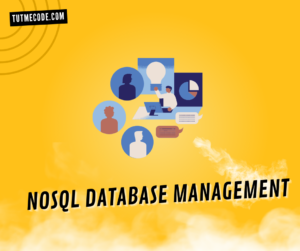AngularJS, developed by Google, is a popular JavaScript framework that allows developers to build dynamic and powerful web applications. Whether you’re a beginner or an experienced developer, learning AngularJS can open up a world of possibilities for creating responsive and interactive websites. In this blog post, we will guide you through the installation process of AngularJS and explore some practical use cases to help you get started on your AngularJS journey.
- Installation
Before diving into AngularJS, you need to set up your development environment. Here’s a step-by-step guide to installing AngularJS:
- Step 1: Set up Node.js and npm
Node.js is a JavaScript runtime that comes bundled with npm (Node Package Manager). Visit the official Node.js website (https://nodejs.org) and download the appropriate version for your operating system. Follow the installation instructions to complete the setup.
- Step 2: Install AngularJS
Once Node.js and npm are installed, open your command prompt or terminal and run the following command to install AngularJS globally on your system
npm install -g angular
- Step 3: Create an AngularJS Project
Now that AngularJS is installed, you can create a new project. In your command prompt or terminal, navigate to the desired directory and run the following command
ng new my-angular-app
This command will create a new directory named “my-angular-app” and set up a basic AngularJS project structure.
- Step 4: Run the AngularJS Application
To start the AngularJS application, navigate into the project directory by running the following command
cd my-angular-app
Then, execute the following command to run the application
ng serve
This will start a development server, and you can access your AngularJS application by opening your browser and navigating to “http://localhost:4200”.
Now we will dive into the latest modules in AngularJS, discussing their key features and providing practical examples along the way.
- ngRoute Module
The ngRoute module enables developers to implement client-side routing within their AngularJS applications. It provides a clean and organized way to navigate between different views and load content dynamically.
Here’s a brief example
var app = angular.module('myApp', ['ngRoute']);
app.config(function($routeProvider) {
$routeProvider
.when('/', {
templateUrl: 'home.html',
controller: 'HomeController'
})
.when('/about', {
templateUrl: 'about.html',
controller: 'AboutController'
})
.otherwise({
redirectTo: '/'
});
});
- ngResource Module
The ngResource module simplifies working with RESTful APIs by providing a higher-level abstraction. It enables developers to interact with server-side resources using predefined actions such as get, save, update, and delete.
Here’s a simple example
var app = angular.module('myApp', ['ngResource']);
app.factory('User', function($resource) {
return $resource('/api/users/:id', { id: '@id' });
});
app.controller('UserController', function($scope, User) {
$scope.user = User.get({ id: 1 });
});
- ngAnimate Module
The ngAnimate module allows developers to add animations to their AngularJS applications with ease. It provides a set of CSS-based animations that can be easily triggered based on predefined conditions.
Here’s a basic usage example
<div ng-app="myApp" ng-controller="MyController">
<button ng-click="toggle = !toggle">Toggle</button>
<div ng-show="toggle" ng-animate="'fade'">
Content to animate
</div>
</div>
- ngCookies Module
The ngCookies module provides utilities for working with cookies in AngularJS applications. It simplifies tasks such as reading, writing, and deleting cookies.
Here’s a quick example
var app = angular.module('myApp', ['ngCookies']);
app.controller('MyController', function($scope, $cookies) {
// Writing a cookie
$cookies.put('myCookie', 'Hello, AngularJS!');
// Reading a cookie
var value = $cookies.get('myCookie');
// Deleting a cookie
$cookies.remove('myCookie');
});
- ngSanitize Module
The ngSanitize module helps prevent security vulnerabilities by sanitizing HTML content and rendering it safely in AngularJS applications. It removes potentially malicious code, ensuring that the application remains secure.
Here’s an example
<div ng-app="myApp" ng-controller="MyController"> <div ng-bind-html="myHtml"></div> </div>
- ngMessages Module
The ngMessages module simplifies the display of form validation messages in AngularJS applications. It provides a convenient way to show error messages based on different validation states. Here’s a basic example
<form name="myForm">
<input type="email" name="email" ng-model="user.email" required>
<div ng-messages="myForm.email.$error">
<div ng-message="required">Email is required.</div>
<div ng-message="email">Invalid email address.</div>
</div>
</form>
Practical Uses of AngularJS
Now that you have AngularJS up and running, let’s explore some practical use cases where AngularJS shines:
- Building Single-Page Applications (SPAs)
AngularJS is well-suited for building SPAs, where the entire application runs within a single HTML page. It provides powerful features like two-way data binding, dependency injection, and declarative templates, which make it easier to develop complex web applications.
- Form Validation and Data Binding
AngularJS simplifies form validation by providing built-in directives and validators. It allows you to easily bind form fields to model properties, validate user input, and provide real-time feedback to users.
- Dynamic Views and Routing
With AngularJS, you can create dynamic views and implement client-side routing. This enables smooth navigation between different sections of your application without page reloads, resulting in a seamless user experience.
- RESTful API Integration
AngularJS makes it straightforward to consume RESTful APIs by providing services like $http and $resource. These services allow you to perform HTTP requests, handle responses, and update your application’s data dynamically.
- Custom Directives and Components
AngularJS allows you to create reusable components and directives, which encapsulate specific functionality and enhance code modularity. You can extend HTML with your own tags and attributes to create custom elements tailored to your application’s needs.
Conclusion
Congratulations on installing AngularJS and taking your first steps toward mastering this powerful JavaScript framework. In this blog post, we covered the installation process of AngularJS along with some of the latest modules available in AngularJS, showcasing their key features and providing practical examples. Using them developers can enhance their AngularJS applications with client-side routing, RESTful API integration, animations, cookie management, HTML sanitization, and form validation messages which can help them in building SPAs, form validation, dynamic views, API integration, and custom directive creation. Stay updated with the latest developments in AngularJS to leverage its full potential and build amazing web applications. Happy coding!




